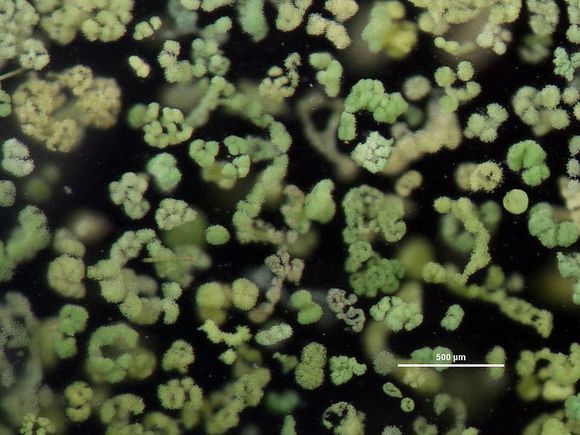
"Habby" New Year from the DPH Harmful Algal Bloom (HAB) Program!
Our program’s 2019 resolution is to improve our outreach to those who could benefit from learning about blue-green algae in Wisconsin—yes, that means YOU! The target populations we hope to reach and work with this year include:
- Summer camp directors and staff.
- Researchers and citizen scientists within the Red Cedar Watershed.
- Health departments serving communities near lakes Castle Rock and Petenwell.
- Visitors to the Apostle Islands National Lakeshore.
- Health departments and tribal environmental agencies within the Great Lakes Basin.
Do you or your department have a HAB-related New Year’s resolution? If so, please share with us by emailing our program!
BGA 101
Blue-green algae are not true algae.
Despite their name, blue-green algae are not actually algae—they received their label for being algae look-alikes. Blue-green algae are actually photosynthetic bacteria called cyanobacteria. With enough sunlight and nutrients, cyanobacteria can grow quickly to form what is known as a blue-green algae or cyanobacterial bloom. Some cyanobacteria are capable of producing toxins, called cyanotoxins, which are harmful to human and animal health.
 Colonies of Microcystis, a common genus of freshwater cyanobacteria (Photo courtesy of NOAA Great Lakes Environmental Research Laboratory and licensed under the Creative Commons Attribution-Share Alike 2.0 Generic license.)
Know the Lingo!
Understanding HAB lingo is important. You’ll want to remember the meaning of the following terms when communicating about blue-green algae:
|
Term
|
Also known as
|
Definition
|
|
Blue-green algae
|
Cyanobacteria
|
Photosynthetic bacteria found in every aquatic habitat
|
|
Blue-green algae bloom*
|
Cyanobacterial bloom
|
A growth and accumulation of cyanobacteria in a water body
|
|
Algal toxins
|
Cyanotoxins
|
The toxins produced by some, but not all, species of cyanobacteria
|
|
Harmful algal bloom (HAB)
|
Cyanobacterial harmful algal bloom (cyanoHAB)
|
A growth and accumulation of cyanobacteria that are suspected or known to be producing toxins in concentrations high enough to negatively impact human or animal health
|
|
HAB-related illness (HABRI)
|
Blue-green algae (cyanobacteria) and cyanotoxin poisoning
OR cyanotoxicosis
|
An illness resulting from exposure to cyanobacteria or cyanotoxins
|
*Since it’s impossible to tell whether a blue-green algae bloom is toxic just by looking at it, all blooms should be treated as harmful algal blooms until proven otherwise.
Be prepared to see these terms in future issues of the HAB Program Newsletter!
This issue’s sample post:
It’s not too late to make a New Year’s resolution! Now’s the perfect time to start thinking about how you can keep Wisconsin’s lakes clean and healthy this summer. Learn what you can do to help prevent algal blooms: http://b.link/cleanlakes

Missed a past issue? Previous issues are available on our Resources for Health Professionals webpage.
Email us your burning questions! If others can benefit from hearing the answer to your question, we’ll feature it in a future issue.
Remember that we are always available for consultation on any HAB health-related issues by email or phone (608-266-1120).
|
|